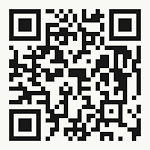Many people sincerely believe they have had such experiences, but there might be a simple reason
The October issue of
The Psychologist is mainly devoted to psychological considerations of human interactions with outer space.
The article I found most interesting, about close encounters with aliens, was written by Christopher French.
Nick Kanas also speculates about how astronauts will cope with deep space travel. One fascinating scenario for interstellar expeditions
described by Kanas involves a giant multigenerational starship on a
200-year expedition to Alpha Centauri (the closest star system to our
solar system). The crew is socially engineered to ensure a stable
population adequate to the limited space, food and water resources on
board.
The initial crew (150-180 people) are young, childless married
couples who will not have children until they enter their 30s. The
number of children would be limited to the population needs of the
mission. The breeding cycle repeats for subsequent generations such that
the population stratifies into echelons of well-defined demographics of
roughly equal numbers over time, clustered into age groups about 30
years apart. The older members teach the youngest members, and the
middle echelon performs routine maintenance work.
Most readers will know of Spielberg’s blockbuster 1977 movie Close Encounters of the Third Kind,
but may not know that encounters with aliens are grouped into four
categories: close encounters of the first, second, third and fourth
kind. Christopher French convincingly explains away all stories of such
close encounters.
A close encounter of the first kind is a simple sighting of an
unidentified flying object (UFO) with no other supporting evidence. More
than 95 per cent of UFO sightings are later explained as misidentified
weather balloons, aircraft and so on. There is no reason to believe that
the tiny percentage of sightings that cannot be identified are anything
strange. A handful of sightings will naturally lack sufficient evidence
for identification, just as the police cannot find enough evidence to
solve every crime.
A close encounter of the second kind is a sighting apparently supported
by physical evidence, typically photographs. However, these photographs
are often ambiguous pictures of ordinary objects. It is now easy to
fake a photograph using Photoshop, for example, and there have been many
hoaxes. No convincing evidence has ever been produced to support a
genuine close encounter of the second kind.
A close encounter of the third kind involves direct contact between humans and aliens who often have messages for humans, for example about the dangers of nuclear war.
Stories of close encounters of the fourth kind, where a human is
abducted by aliens, now outnumber stories of encounters of the third
kind. In an early 1957 report a Brazilian farmer described being pulled
into an alien spaceship and forced to have sex with a female alien, who
made barking sounds during intercourse.
The experience reported by Betty and Barney Hill
in 1961 shares common features with many reports of encounters of the
fourth kind. The Hills were driving home when they sighted a UFO. They
arrived home later than expected and were to unable to account for a
period of two hours. Betty started to have dreams in which aliens pulled
her into their spacecraft and medically examined her. Years later, both
Hills were hypnotically regressed by a psychiatrist and recovered
detailed memories of the 1961 alien abduction and medical examination.
Most are sane
Experts agree that most people who claim alien abduction experiences
are sane and sincerely believe they have encountered aliens. French
proposes that a common phenomenon, sleep paralysis, could make many
think they had contact with aliens. Sleep paralysis occurs just before
one falls asleep or wakes up, normally lasts a few seconds and may feel a
little odd, but no more.
But in a minority of cases it can be a
terrifying experience, accompanied by a strong sense of evil, difficulty
breathing, seeing lights and grotesque figures, hearing voices and
feeling one is being dragged out of bed.
The next step for many is to consult a hypnotherapist in order to
recover “lost memories” of the encounter. French argues, quoting
considerable evidence, that hypnotic regression is very likely to
produce false memories. The whole alien encounter phenomenon seems to
have nothing to do with outer space and everything to do with inner
headspace.










